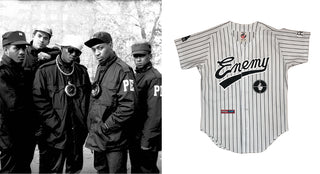DJ Ross One (born Ross Schwartzman) was one of four kids to own a Beastie Boys T-shirt at his Cincinnati-based high school. Ross’s friends and family understood his deep love for hip-hop, so the shirt made sense to them. After all, it was Ross’s way of feeling connected to the trio from New York City that he loved to listen to.
When Ross purchased a Public Enemy T-shirt, his loved ones still didn’t flinch. At an early age, buying merchandise (specifically T-shirts) bearing his favorite hip-hop artists was fun for Ross, but his hobby quickly became an obsession over the years—leaving Ross with a dilemma. “I realized I needed to do something with this collection, so that I could not finish collecting shirts, but kind of chill a bit, so at least they’ll all be in one place if I decide to sell them off,” Ross explained.
Two years ago, Ross came up with the idea of creating a book that would document not just all the rap tees cluttering his closet, but a variety of other vintage hip-hop shirts from 1990 to 1999. With help from a few other collectors, Ross’s book, Rap Tees, was released in early November, and almost immediately sold out on Amazon.com. Here, Ross shares his story with The Hundreds.
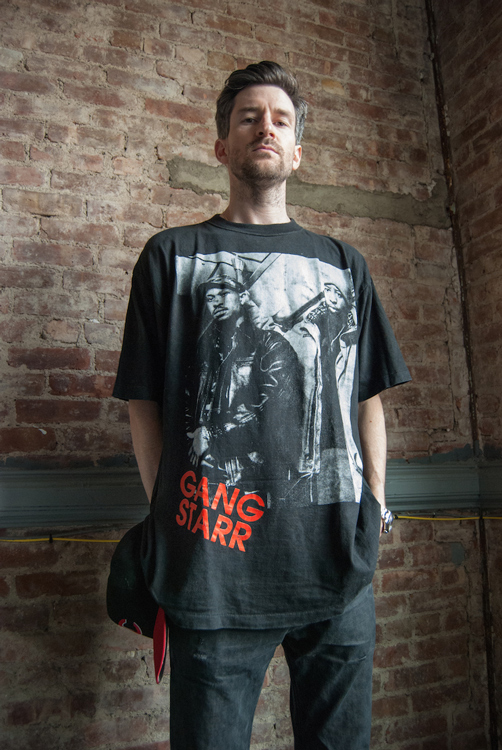
Photo: massappeal.com
CHRIS HARRIS: “Rap Tees” is currently sold out on Amazon. How does that feel?
DJ ROSS ONE: It did, it sold out. They just re-upped. It’s back in stock now, but it was gone for a few days... It was great, the initial reaction right when we launched was really, really good. I’m thrilled. I was really excited that so many sold and so many people supported right out of the gate and yeah, I’m glad it’s back up now because there were a lot of people who wanted it. It’s like a two-sided thing, where I’m happy it sold out but I want it to be available. I don’t want people to go to Amazon and [have] it ‘say not available.’ I want them to be able to buy it right away.
The book states that your first rap T-shirt had the Beastie Boys on it, and then you bought a Public Enemy shirt—I’m curious, what was the reaction from your friends and family?
People kind of expected it. That music was so important to me. It was all I was listening to, all day. I think at that point, definitely my family and friends knew I was a fan. Those were big artists at the time. The Beastie Boys were huge at the time. There was a crossover appeal. There were people into the Beasties but I always loved wearing the shirt. I always loved being a fan and repping. In my high school, there wouldn’t have been too many kids wearing a Beastie Boys shirt. There was maybe like four or five of us.
“THE BEASTIE BOYS CREATED THIS TRANSITIONARY WAY OF DRESSING [BETWEEN SKATE AND HIP-HOP]”
How did the Beastie Boys influence your style?
I think just the way they presented themselves. The way they dressed, when you saw them in music videos, even for like “So What Cha Want”—they kind of had this weird mix of dressing like skateboarders and having a bit of hip-hop style and then it was kind of like they were still wearing Dickies, and khakis and knit hats, and stuff. They just kind of had this weird crossover thing where it felt very accessible. Some of the hip-hop acts, if I would’ve dressed like them, it might’ve looked more like a costume or something. It might not have fit, but the Beastie Boys created this transitionary way of dressing where it felt very natural and my friends were skating and my friends were listening to hip-hop and so, they sort of became like a model for, “Oh, this is how you can kind of be involved but still be yourself in the way you dress.” And even just the photos being in black-and-white, I was really into photography at the time. Just the way the whole thing was presented to me, it clicked and it was kind of like, “I can relate to this.” And then the fact that they were on these records with... They’d have like Q-Tip or Biz Markie on their record. That was just cool to me that they were doing albums and songs with these guys who I also loved—they were kind of just bridging that gap for me.
Can you pinpoint the moment when you decided you wanted to create the “Rap Tees” book?
It wasn’t really a specific moment. As a collector, it starts out as a hobby and something fun and then it reaches the point where it almost becomes a bit of a problem. It’s like almost like an addiction… You’re buying T-shirts you won’t really wear, or you’re buying things that don’t even fit. As that started happening more, I realized I needed to do something with this collection, so that I could kind of not finish collecting shirts but kind of chill a bit, so at least they’ll all be in one place if I decide to sell them off. I had sold a few shirts and regretted that I didn’t document them first. This was kind of a way to bring the whole collection together in one place. At least now, they can all have this one real home, forever, in the book and it doesn’t matter quite as much where the T-shirts end up.
Did this realization occur a few years ago?
Yeah, it was probably... I’ve been working on the book for around two or three years. I definitely thought about it for a while before I started doing anything. The timing felt right. The T-shirts were kind of popping and in fashion. You could see celebrities [and] people starting to wear them, where it might sell and get some interest.
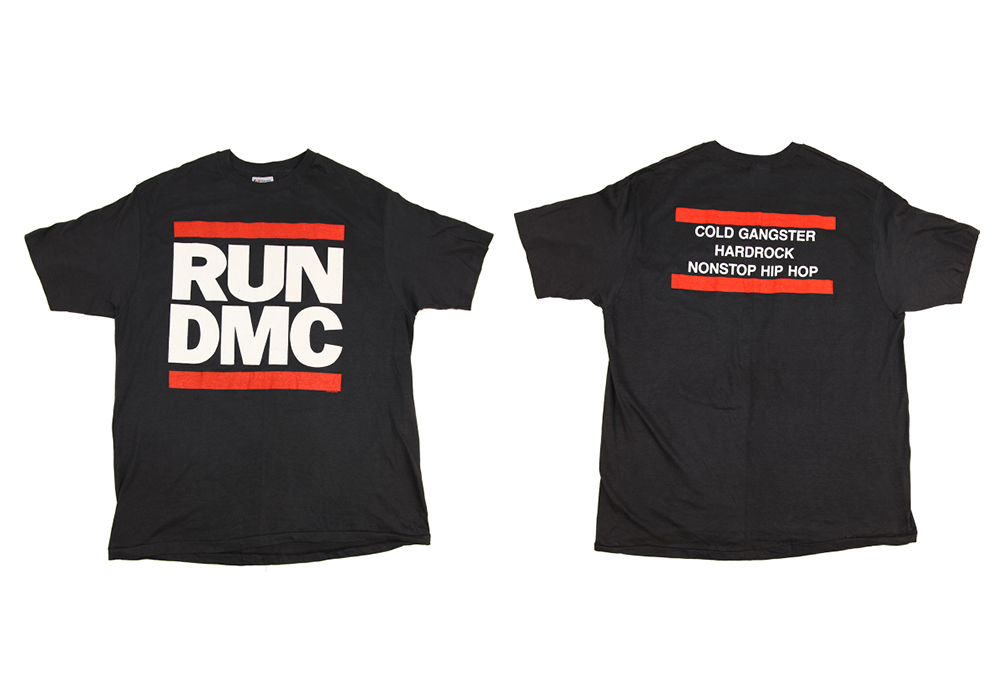
There definitely has been a lot of ’90s nostalgia going around and I have noticed a lot of the shirts are coming back. For All To Envy is one of the brands that many of the artists were buying these shirts from. Can you talk about the contributors who helped you create the book?
Kirk [Tilton] from For All To Envy, he was the next biggest contributor behind me. He has a crazy collection. His shop in L.A. is great—if you’re into these kind of shirts, it’s one of the only places you can go and they’re all in one place. I definitely recommend it if you like what’s in the book. We’re actually doing a pop-up shop there on Thursday and it’s kind of a launch for the book; he’ll be selling shirts and I’ll have books for sale and all that. Kirk was the biggest one—I definitely appreciate him and Brian Procell in New York, who has a shop in New York called Procell, [and] was another big contributor. He has another great story there, with not just hip-hop, but vintage ‘90s all the way to the mid-2000s. He has a curated store of vintage and semi-recent clothing. Between those two guys, I got a lot of stuff to kind of fill in the gaps. The next biggest contributor was a DJ named Kevin Scott, who lives in L.A. He had a bunch of great shirts and he was one of the guys who sort of put things together with Kirk for me. And then Japan was pretty crazy. Japan had a ton of tees, and we did a big photo shoot over there.
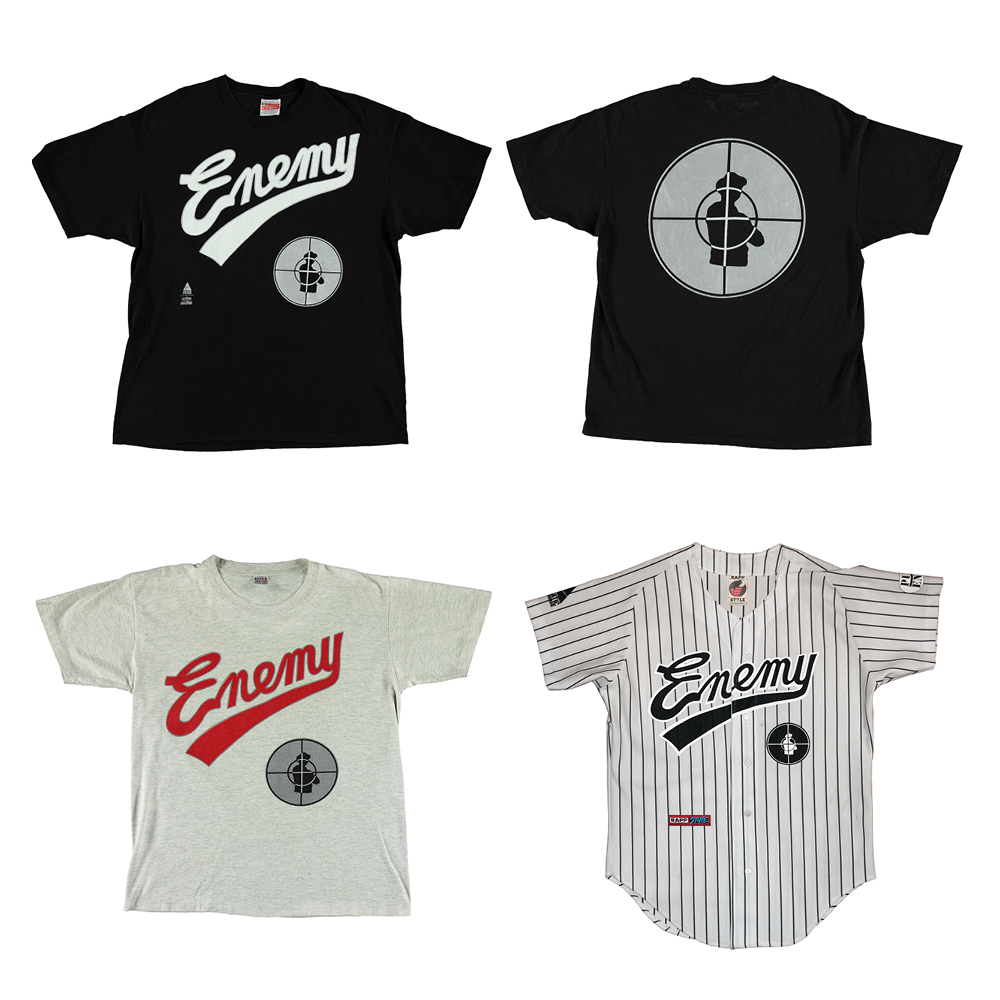
You were able to speak to LL Cool J, Rick Rubin, and Russell Simmons, among others about these shirts they actually wore. What was that experience like?
It’s been great talking to those guys. The t-shirts bring back a lot of memories immediately for them. For everybody I talk to, definitely the designers—Cey Adams, Eric Haze—when they see those shirts they open up because it takes them back to a simpler time in hip-hop for them where it was just about being on the road, doing tours, selling T-shirts. Hip-hop was still in its early stages, so most of those guys didn’t hold on to their T-shirts. They had no clue they would want to or need to over the years. For most of those guys, it was the first time for them seeing the shirts in like 30 years. When they see them they’ve definitely been great filling in the project and getting their insight on the book, and the designs. Those are some of my heroes in hip-hop. It’s been pretty amazing to talk to them.

Photo: dropnrollclothing.wordpress.com
Can you recall one conversation, where you were just like, “Wow, I’m really speaking to him”?
Yeah, I talked to Russell Simmons for like a half hour on the phone about it. He was just giving me [the background of] being on the road and making these T-shirts and the thought process behind it and [that] sort of the idea. He was kind of the guy who, him and some of the artists he was with like Kurtis Blow… they were really the only people that believed in themselves. So, it was kind of like them making these shirts and saying, “This is what we do. This is hip-hop. We’re the best at it.” That was their mentality going in. You can see that in the shirts and I think when he went back and looked at the shirts it brought back a lot of memories of the time. It was cool.
How has the merch changed since you first started collecting in the early ’90s?
If you look at the book, you can definitely see how it kind of evolves over the years from its innocent beginnings. Where it’s just like a picture of the artist or even in the early bootlegs, it’s more about the tours and you can see the groups of artists that were working together on these tours. As time goes on, the shirts got a little bit more promotional; it was more about the logo, the record label, and some basic information about the album that was coming out. Then, as you get into the late ’90s, it was almost like wearing a billboard. Those ’90s hip hop promo tees were huge, like XXL shirts, and it was just very in your face, very basic—“get the word out, the album is coming out” in big and bold letters. With the bootleg early on, it was very handmade, almost done at a print shop. Through the ’90s, you got into that bootleg style, and that’s popular now where it’s like a crazy collage, very No Limit, pen and pixel style, very colorful and just like a ton of images layered on top of each other.
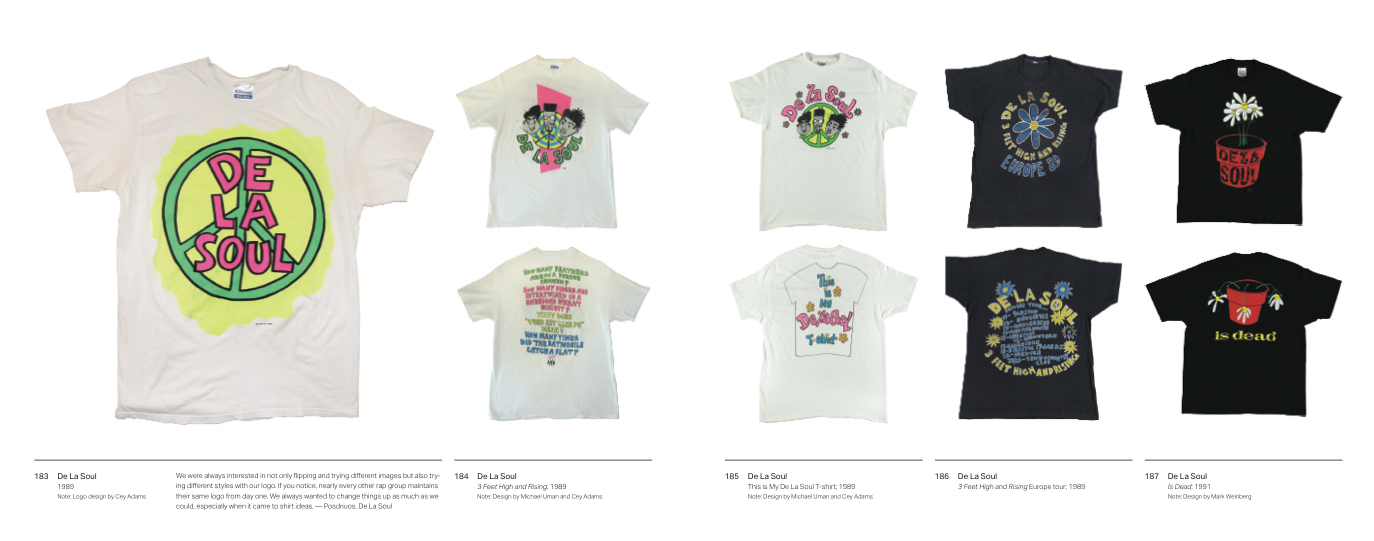
Do you pay attention to the merch that comes out now?
I keep my eye on it, because I’m a DJ and in the clubs. I keep up on all the new music. Kanye dominates with new merch for tour stuff.
What’d you think about the confederate flag tees he had for the Yeezus tour?
It’s not for me, but the stuff he was doing for the tour, those are all kind of knock-offs of Metallica shirts. What’s crazy is that Dr. Dre was using the same artist as Metallica back in the early ’90s with the Pushead shirts around the Chronic so it’s not necessarily a new thing to do that. But Kanye knows what he’s doing. He wants to be a rock star—he is a rock star—so when he comes up with his merch for these tours, he wants this to be a part of the event, which is the way that rock n’ roll artists think about it.
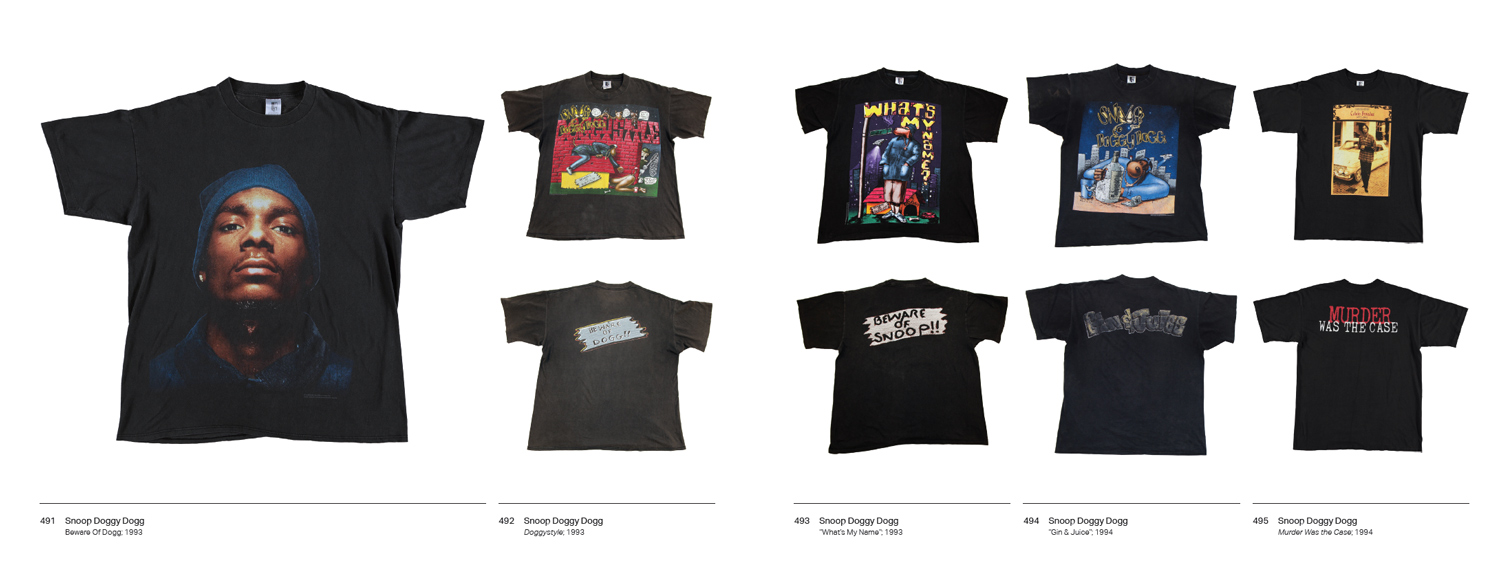
You have over 300 tees—why do you only wear 5-10?
[Laughs] I always just go back to my favorite hip-hop groups. First of all, finding hip-hop T-shirts, vintage shirts that actually fit you that you want to put on and it feels right, is a little tough. I’m a little over 6 feet tall, so finding vintage tees that aren’t like a huge XXL or aren’t too small [is already limiting]. I’m just always wearing my favorite artists. So, if you give me a choice of a shirt to wear, I’m going to always return to the people I’m the biggest fans of which is Native Tongues, Public Enemy, Biggie, Nas. You take that into consideration and take [that] not many of the shirts fit exactly how you want them to fit and it starts knocking out the shirts pretty quick. You get down to your ten favorite pretty quick.
Are you interested in collecting merch for newer artists?
I have a couple Kanye shirts from My Beautiful Dark Twisted Fantasy. I’m not really that interested in it now, just because I don’t really have the space for it. The music doesn’t mean as much to me. It’s different when you’re a kid and the music is shaping your adolescence and turning you into the person that you are. Those songs and those artists have a more special place for me, whereas new music—even if I like the shirt or I like the artist—I don’t necessarily need to be walking around wearing their t-shirt. I can like the music and not be a real fan. I think that being a real fan, that comes from being young and having artists that you look up to that shape the way you dress and the way you act. There are new artists that I love, definitely Kanye. I liked that My Beautiful Dark Twisted Fantasy record a lot, and I like the shirts, so I picked up a few of those and I wear those. But otherwise, I’m not really buying new stuff. No room.
***
Purchase your own copy of RAP TEES on amazon.com.

